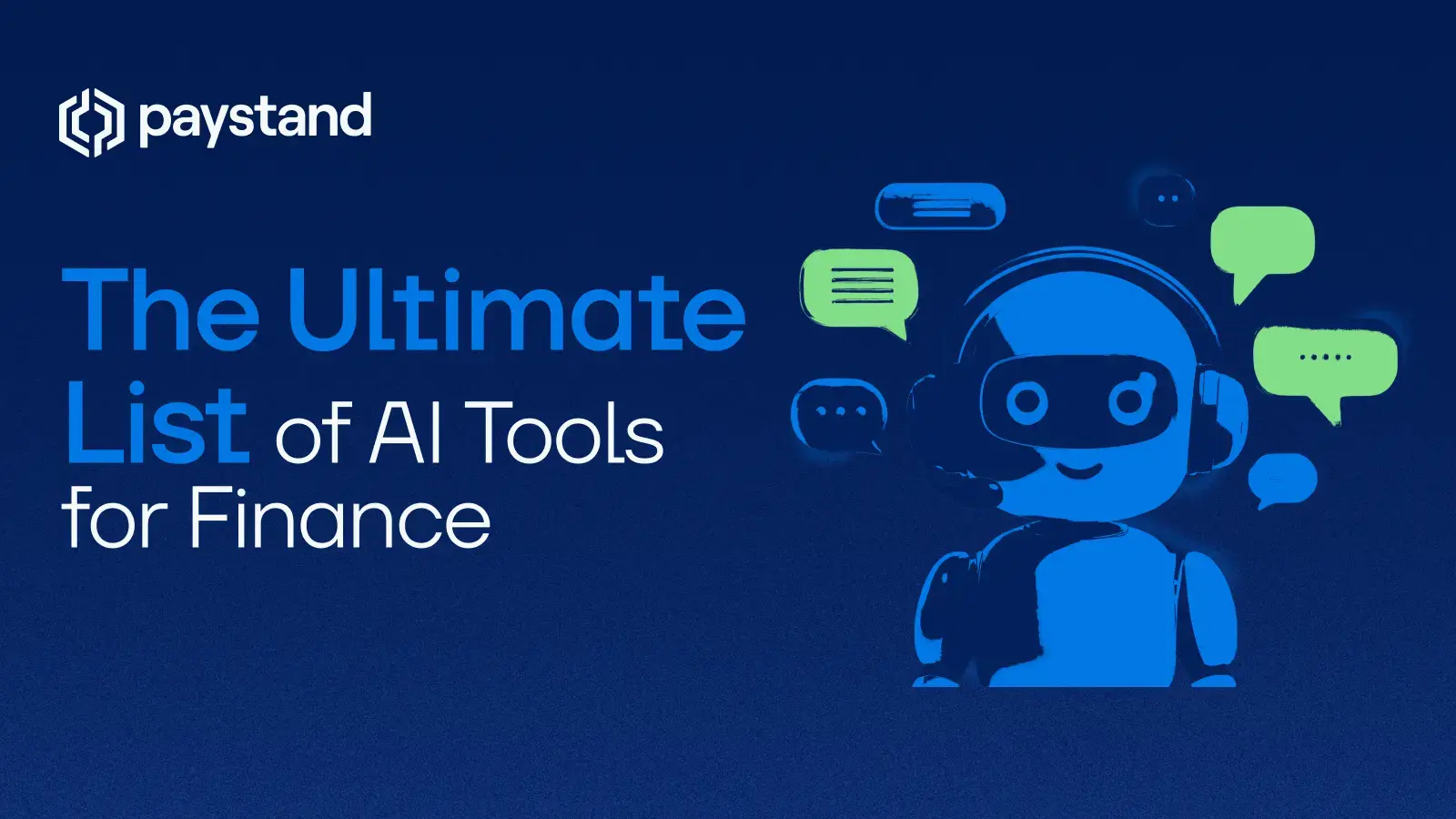The Ultimate List of AI Tools for Finance

Table of Contents
- From Manual Work to Machine-Driven Efficiency
- Ranked AI Tools for Finance Departments
- How AI Transforms Strategic Decision-Making
- The CFO Takeaway
Key Takeaways
- Automating reconciliations, AP/AR cycles, and variance commentary frees teams from manual work and accelerates close timelines.
- Integrated tools in NetSuite, Sage, and Acumatica streamline invoice capture, anomaly detection, and payment predictions without overhauling existing systems.
- LLMs like Claude and BloombergGPT simplify complex financial narratives, enhancing board reporting and audit readiness.
- Platforms that empower scenario planning, fraud detection, and risk modeling shift finance from reactive to strategic
- Start with daily-impact tools like Copilot and Smart Match, then expand into FP&A automation and analytics copilots to build a future-ready finance function.
Finance professionals are embracing AI tools for finance to lift manual work, sharpen forecasting, boost anomaly detection, and modernize financial reporting. Smart use of artificial intelligence isn’t about replacing human insight; rather, it’s about making the human work more impactful. In this blog, we’ll explore how AI tools for finance and accounting are transforming finance workflows, enabling real‑time insights, and freeing teams to focus on strategic decision‑making.
Let’s dive into a ranked list of the most impactful AI tools for finance departments, from what you can already find within your ERP to new tools you may not have known of.
From Manual Work to Machine-Driven Efficiency
Manual work, repetitive reconciliations, and slow variance analyses have long burdened finance functions. Traditional methods hamper agility and distract from core strategic thinking. AI-enabled platforms, however, offer automated reconciliations, variance explanations, fraud detection, and predictive analytics in ways that free humans to add value.
By integrating machine learning and generative AI into workflows, finance professionals can reduce errors and latency. AI-powered financial data analysis and anomaly detection untangle complexity, while real-time dashboards and natural language summaries translate raw data into clarity.
Ranked AI Tools for Finance Departments
Let’s explore a curated breakdown of tools by urgency and impact, starting with what finance teams must adopt now, moving into high-impact forecasting and controls, and ending with strategic/nice-to-have tools for polish and investment insight.
Must-Adopt Now
Microsoft 365 Copilot for Finance
Automates reconciliations, variance explanations, and collections workflows across Excel, Outlook, and Teams.
Impact: Offers the biggest near‑term lift in daily workflows across finance teams.
ERP‑Native AP/AR AI
If you’re using NetSuite, Sage, or Acumatica as your ERP, you’re starting to see native features that use Artificial Intelligence, including invoice capture, bill extraction, payment predictions, and GL anomaly detection.
Impact: Reduces manual entry, speeds up AP/AR cycles, and bolsters internal controls.
Paystand
Our own AI‑powered tool, Smart Match, automatically reconciles payments with invoices.
Impact: Shrinks month‑end close timelines, enhances accuracy, and cuts manual effort in AR reconciliation.
Datarails
For FP&A and treasury, this tool automates budgeting, forecasting, and reporting inside Excel while adding treasury cash visibility.
Impact: Condenses FP&A cycles and improves confidence in board‑level reporting.
High Impact Next
Claude for Financial Services
This LLM long‑context model is tuned for financial modeling, regulatory analysis, and narrative drafting.
Impact: Augments FP&A and audit commentary with scale and speed.
Oracle ERP AI Agents
If Oracle is already within your tech stack, you’ll find AI agents that detect anomalies on their own, monitor fraud, and manage exceptions.
Impact: Enhances governance and strengthens compliance.
Feedzai
AI-driven fraud detection and anti‑money laundering (AML) monitoring.
Impact: Shields organizations from financial crime, vital in compliance-heavy environments.
DataRobot
A machine‑learning platform for cash‑flow forecasts, scenario planning, and credit‑risk modeling.
Impact: Elevates forecast accuracy and fuels strategic planning confidence.
Power BI with Copilot / Tableau AI
Enables conversational analytics, proactive KPI alerts, and dashboard automation.
Impact: Democratizes insights, making analytics accessible to CFOs, controllers, and analysts alike.
Strategic or Nice‑to‑Have
AlphaSense
AI-powered market research across filings, earnings, and news.
Impact: Valuable for CFOs focused on strategy or investor relations, though less central to core controllership.
BloombergGPT
This finance-tuned LLM is designed for investment analysis and modeling.
Impact: Ideal for treasury/investment arms, though less immediately useful for internal finance operations.
Prezent
Crafts branded and compliant financial presentations for your Board.
Impact: Polishes executive communications, but incremental compared to FP&A automation.
How AI Transforms Strategic Decision-Making
More than just streamlining tasks, implementing AI tools for finance and accounting transforms how finance teams strategize. Real-time predictive analytics, anomaly flagging, and scenario modeling equip decision-makers with clarity and foresight. Rather than reacting to closing month-end bookwork, leaders shift into proactive positioning.
- Data analysis tools uncover trends that drive investment and cost decisions.
- Generative AI simplifies complex narratives into executive-ready summaries, empowering faster alignment between finance and company strategy.
- AI-powered anomaly detection enhances controls and reduces risk exposure.
These innovations free finance professionals from tactical firefighting and position them as architects of organizational resilience and growth.
The CFO Takeaway
For modern CFOs, the true value of AI in finance isn’t about chasing shiny tools; it’s about creating capacity for strategic command. Your teams are buried in manual reconciliations, variance chases, and reactive reporting cycles. That’s not where value lives.
By pacing the rollout, starting with capabilities that deliver immediate lift, then building into forecasting, controls, and executive-level polish, finance organizations can amplify impact sustainably and measurably.
Start with what delivers immediate ROI:
- Automate reconciliations and variance commentary
- Accelerate AP/AR cycles
- Eliminate friction in cash application
Then layer in next-level visibility and foresight with:
- FP&A automation
- Financial modeling and audit narratives
- Risk and forecasting precision
Finally, augment strategic impact with analytics copilots and capital markets AI tools. Each layer helps transform the finance function from a tactical close-report engine into the intelligence hub of the enterprise.
The adoption of AI tools is about repositioning finance as the driver of organizational agility, risk mitigation, and capital allocation. It’s your opportunity to architect a future-ready finance function. Learn directly from leading CFOs and technologists on the tools, tactics, and timelines for AI adoption in enterprise finance and watch the replay of our latest webinar: AI in Finance: How Finance Leaders Are Using AI Today.







